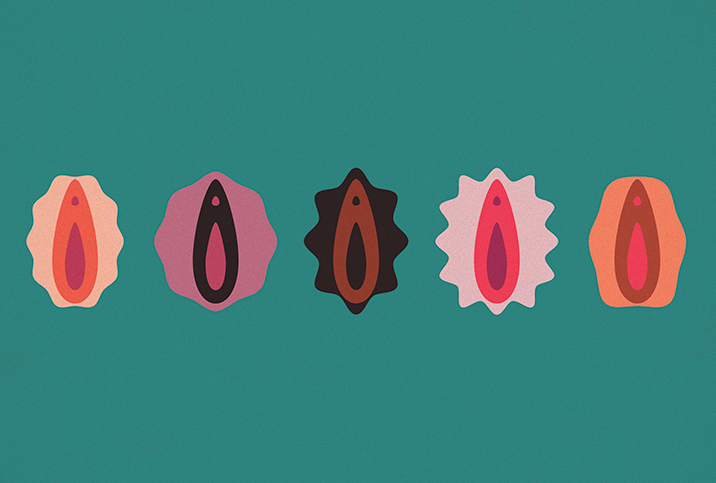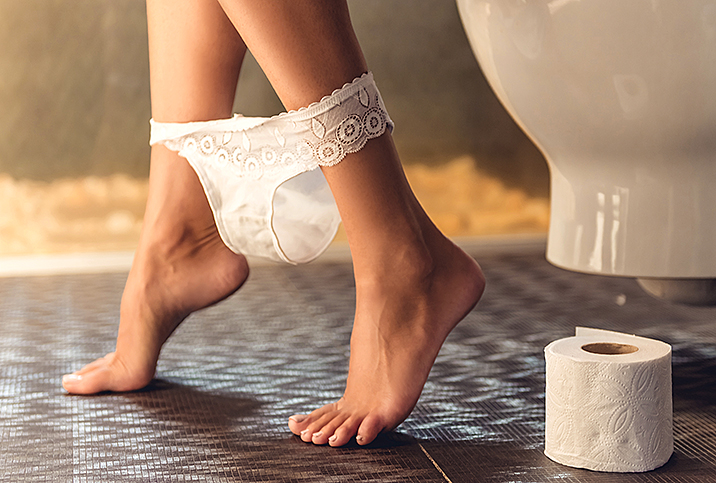Are My Labia Normal?

Whenever your hands start wandering downstairs, there's one body part you have to pass before you get to the good stuff. Meet the labia: the fleshy lips that protect the vagina.
In general, it's difficult to know what normal looks like when it comes to body parts that spend most of the day covered: Are yours too long or short? Too plump or thin? Too dark or pale? Too wrinkled or smooth? And when you don't know how yours compare, it's easy to imagine how weird or different your nether regions would look next to someone else's.
Now some women are so concerned about how their labia look, they're going under the knife to change them: The number of people getting labiaplasty—a surgical procedure that reshapes the inner or outer lips—rose by 9 percent between 2018 and 2019. That's a total of 11,218 labia getting a redesign per year, according to the American Society of Plastic Surgeons.
But is there a certain way labia should look? Let's return to Anatomy 101.
"There are two sets of labia; the labia minora, and the labia majora," said Kim Langdon, a retired OB-GYN and medical advisor at an Austin, Texas, digital health company called Medzino Health. "The minora are the official opening to the introitus, or opening, to the vagina, while the majora flank the minora laterally towards the thighs."
The labia majora are usually larger than the labia minora, but this can vary from person to person.
When it comes to what's 'normal' for labia, the answer is almost anything.
"Some labia minora can extend well beyond the majora and can get caught in clothing or not be able to be tucked in comfortably,” Langdon said.
Although having labia that are an uncomfortable size or shape might be irritating, it's perfectly natural for labia to come in all shapes and sizes. When it comes to what's "normal" for labia, the answer is almost anything.
"Normal is anything that physically works and does not cause physical symptoms or pain with normal activity," Langdon explained. "Like faces, no two sets of genitals are identical."
The color of labia can also vary widely.
"Some people may have hyperpigmentation, where it's a little bit darker," said Tamika K. Cross, an OB-GYN at Serenity Women's Health & Med Spa in Pearland, Texas. "Some people have more of a pale pink color. It really ranges and it just depends on how much melanin is in the skin down there. Typically, people with darker skin tones have more melanin, which means they are going to have darker genitals."
"The color of the majora is about the same as the rest of the skin, except it may be darker on the outside and pinker on the minora side," Langdon added. "The minora is usually a bit lighter and pinker on the inside."
Labia can also change over time, just like any other part of the body. Hormonal changes, puberty, childbirth and menopause can all play a part in determining how your labia look and feel differently over time, according to Cross.
Of course, you should keep an eye on certain changes.
"Anytime there's a mass or a lesion on the labia, I definitely recommend getting an expert opinion immediately," Cross said. "Another common (change to notice) is redness and irritation, which could be associated with a yeast infection."
If you aren't experiencing any of those symptoms, then your labia are probably completely normal. Get to know your bits with your own hands and eyes; the more you know about what's normal for your body, the easier it will be to see if anything changes unexpectedly over time. Plus, it's a great excuse to enjoy some "you time."


















